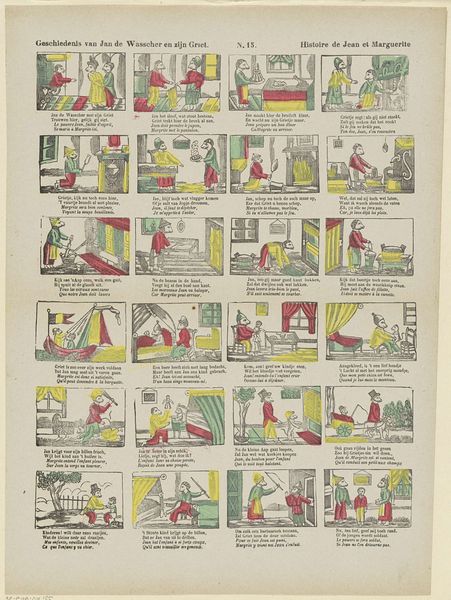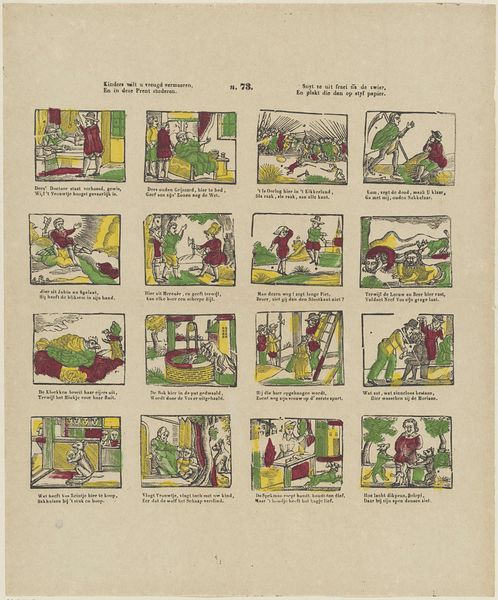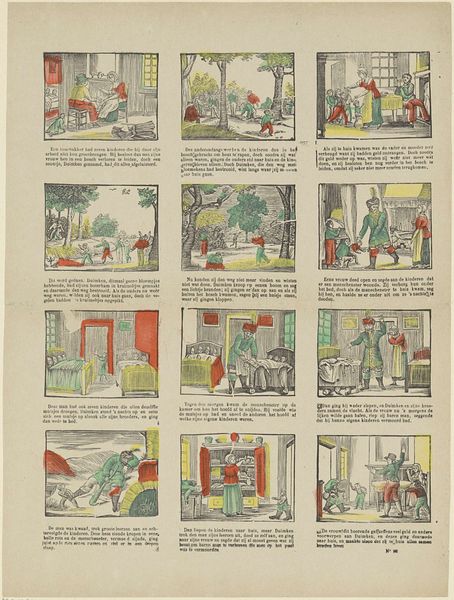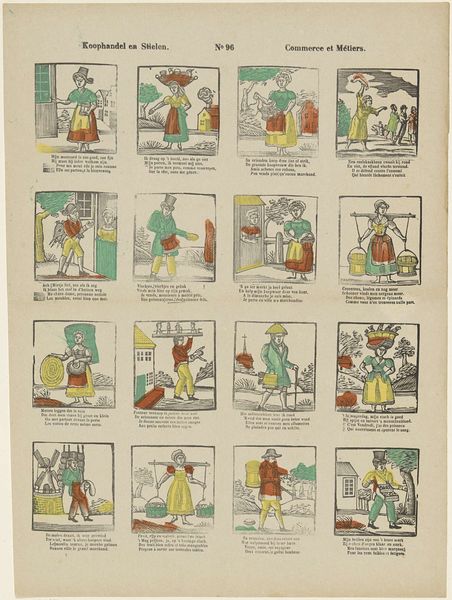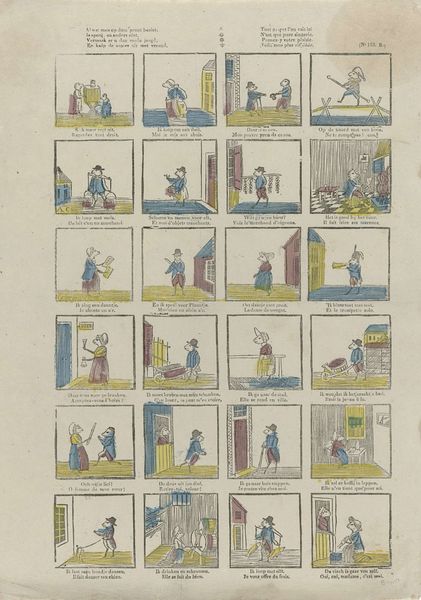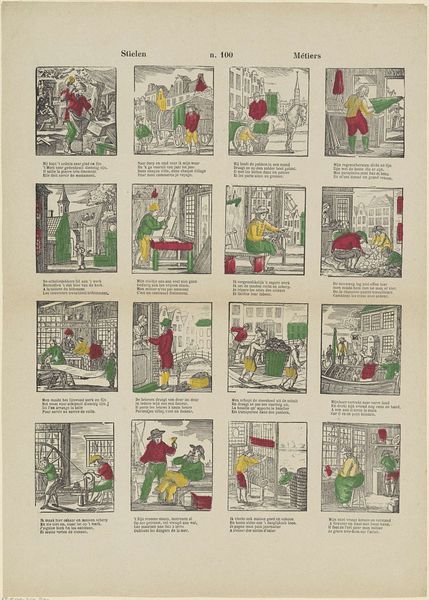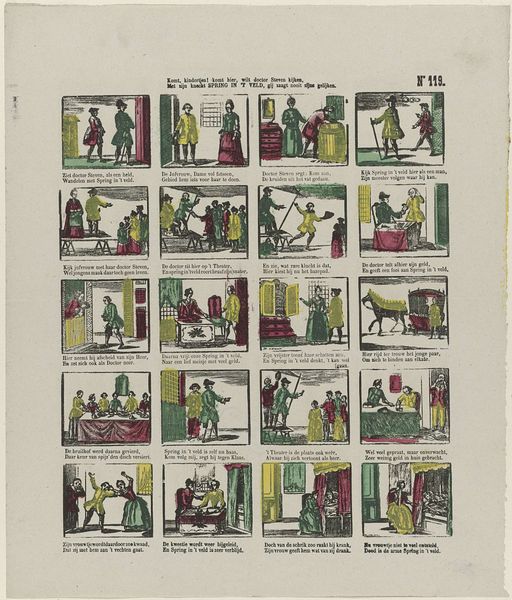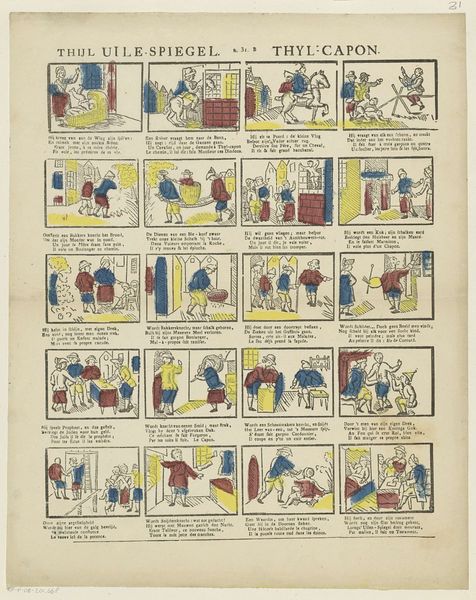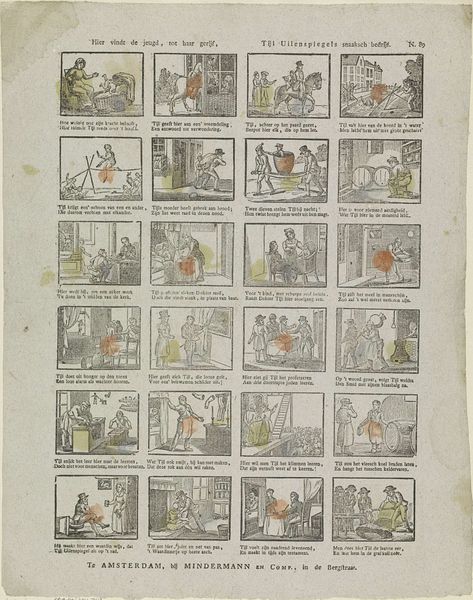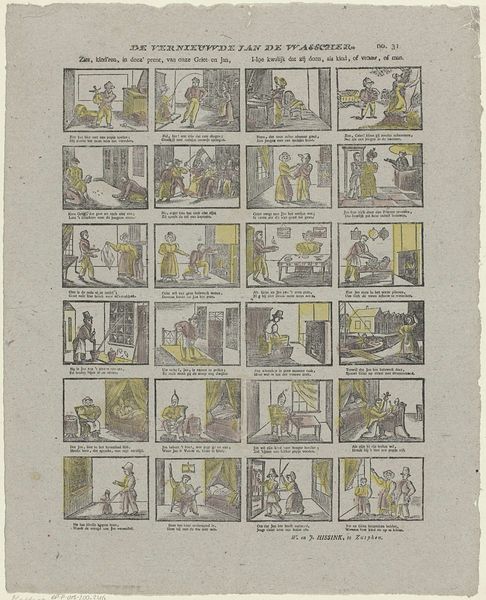
Dimensions: height 382 mm, width 333 mm
Copyright: Rijks Museum: Open Domain
Curator: Let’s explore "Jan de Wasscher / Jean le Buandier," a print dating somewhere between 1856 and 1900 by Glenisson & Zonen. It presents as a comic strip or a storyboard. What strikes you about it visually? Editor: The composition is immediately captivating. It's laid out as a grid of individual scenes, each framed like a miniature stage, unified by this intriguing limited color palette of primarily yellows, greens, browns, and reds. Curator: Absolutely, and beyond its aesthetic charm, it invites us to consider the context of labor. "Wasscher" translates to "launderer." In 19th-century Europe, the work of laundering was incredibly gendered and often a marginalized profession, typically performed by working-class women. These visuals become a window into those everyday experiences. Editor: The style hints at a confluence of influences, perhaps some woodblock tradition mixed with developing printmaking technologies. It feels folksy and accessible. The simplicity of lines directs attention to form and action within each vignette. Curator: Precisely, and look at how it addresses domestic dynamics! You see Jan depicted in various domestic situations—assisting with childcare, navigating marital dynamics. There's a distinct, perhaps subversive, commentary on prescribed gender roles emerging through each panel. Editor: I’m drawn to the tension in the rendering. Note how flat the image appears in areas while simultaneously creating moments suggesting depth—especially in interiors. It is skillfully done. Curator: We might even analyze these figures through a post-structuralist lens. The characters, ostensibly simple, actually embody complex social narratives about class, gender, and the lived realities of ordinary people within a burgeoning capitalist society. Editor: Looking at the work has given me insight into its visual strategies—it’s like reading a set of signs whose relationship remains suspended between the linear narrative. I could easily get lost decoding individual panels. Curator: Agreed. For me, this artwork provides such a vital opportunity to link art history with a socio-political examination of working-class experiences and gender performance in the 19th century.
Comments
No comments
Be the first to comment and join the conversation on the ultimate creative platform.

